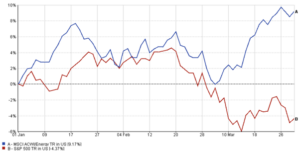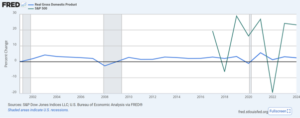The Federal Reserve decided on Wednesday to leave interest rates unchanged, betting that recent improvements in inflation and the labor market will sustain the economy. Investors are betting the central bank could start cutting rates sooner than they previously expected.
The Federal Open Market Committee kept the benchmark rate unchanged at 5.50%. This puts continuity to the Fed's caution for the last year, when it has highly responded to the arriving economic indicators in its decisions about the policy stance. In light of new data arguing for progress on inflation and a loosening of labor-market tightness—indicators of the gradual effectiveness of the Fed's restrictive monetary policies—this will likely have prevailed after some volatile inflation figures earlier this year.
The inflation rate has come down over the past year, but it stayed still somewhat too high, the Fed said in its policy statement in July. That contrasted with June's statement, in which the Fed had called inflation "elevated." The difference is subtle, but in a way, it epitomized the slow progress the Fed saw in reaching its target.
The Fed pointed to an important change in its focus: the cooling job market. Against the previous month, the statement spelled out that the committee is now, "attentive to the risks to both sides of its dual mandate," against last month when the primary accent was still on "inflation risks." However, it now signals that it is equally concerned about the potential risks to achieving its employment and inflation objectives.
"The Committee judges that the risks to attaining its employment and inflation goals continue to move into better balance," the statement added. With such positive tones, the Fed highlighted that there will be a need for greater assurance on the part of the committee that inflation is learning convincingly towards the 2% target.
After the FOMC meeting, Federal Reserve Chairman Jerome Powell, addressing a news conference, slightly signaled a possible rate cut in September. So, according to some such economists, this was a gently dovish tone, more accommodative than the official FOMC statement, pointing to the likelihood that the Fed is nearing an easing of monetary stance.
“INFLATION” He said some FOMC members had even been prepared last month to cut rates immediately after the July meeting, though this was not a majority view. The inflation data of recent date, he asserted, has reinforced their confidence in their forecast, meaning that further positive economic news could cement it.
He said that on the labor market, an acknowledged moderation has been observed, but there was not enough substantial evidence to confirm a big weakening. He repeated again that the decision at the September meeting again would be based on an all-encompassing review of the data, rather than being hinged on a single metric. It would be the Fed's approach, he clarified, on embracing the whole outlook of the economy and the balance of risks.
Ahead, Powell said more concrete guidance could come at the end of August at the annual Jackson Hole symposium, after the Fed has been able to assess another month of economic data. For now, it suggests the upcoming event will be one of those significant, provide more clarity on where the Fed's policy is going.
These are some of the issues that the central bank is wrestling with in an increasingly complex economic landscape, making both investors and economists the tip of the spear in trying to decipher the decisions coming from its meeting. With inflation, employment, and general economic conditions driving each other, the Federal Reserve will need to ensure that it reaches the best possible balance in meeting its dual mandate against what has become a rather odd confluence of economic challenges.





